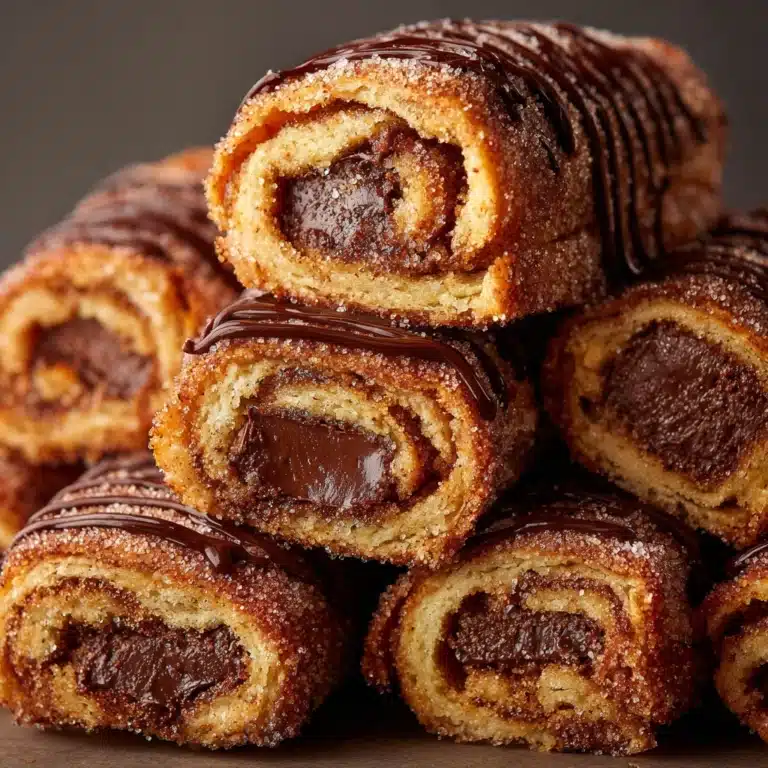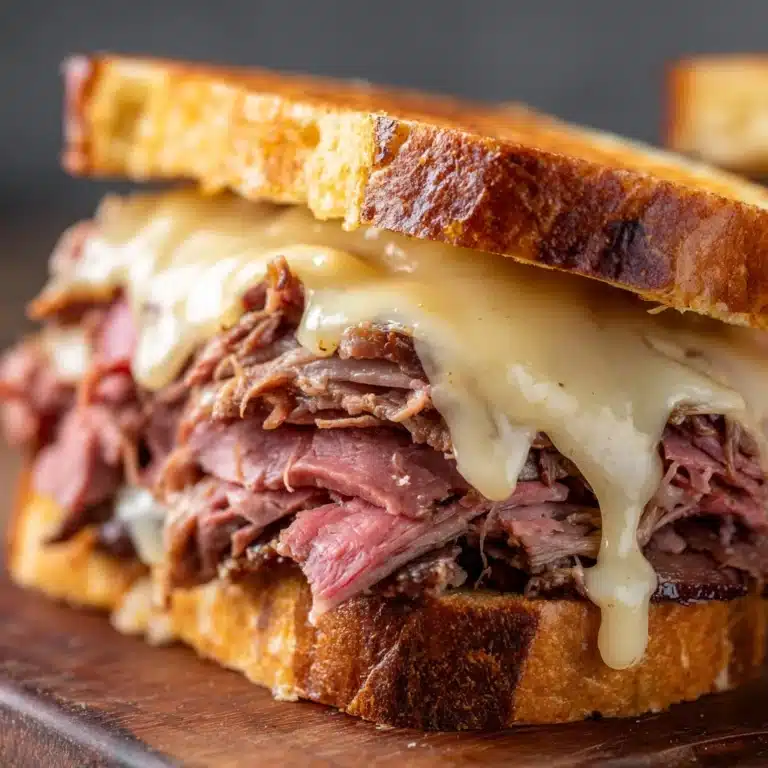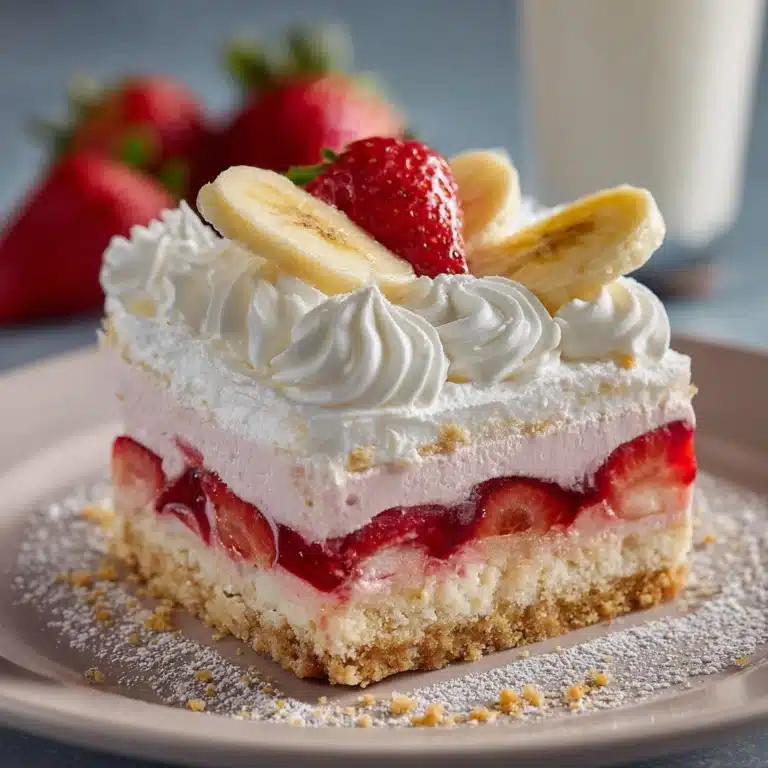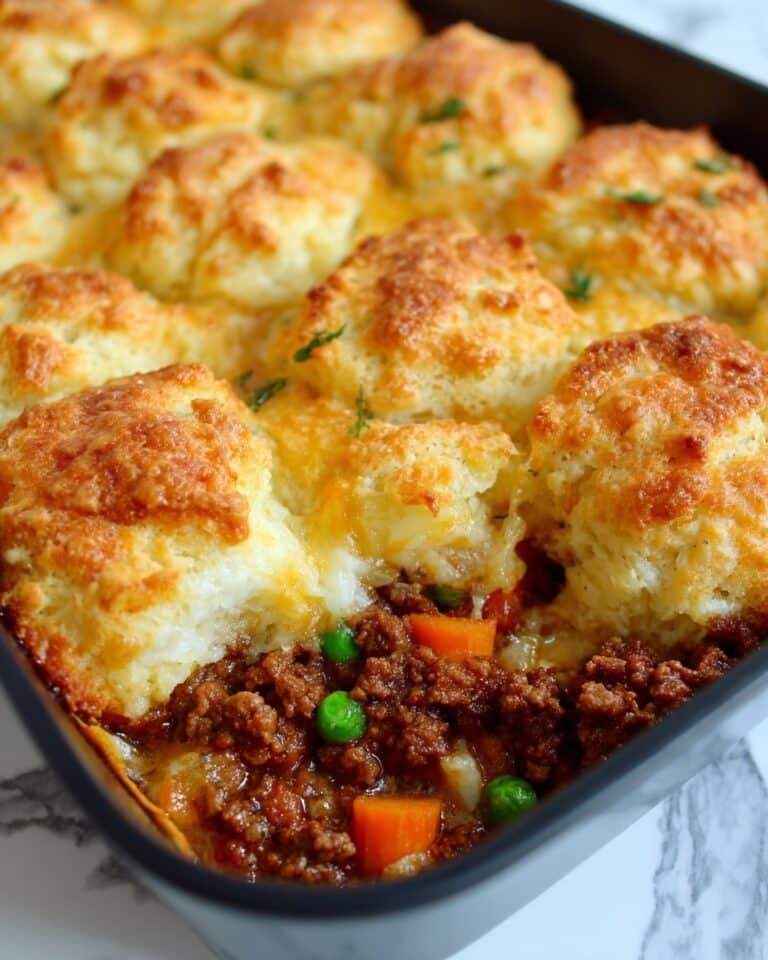Classic Japanese Melon Pan Recipe
If you’ve ever wandered into a Japanese bakery and been captivated by a sweet, soft bread crowned with a crisp, sugary crust, then you’re already familiar with the magic of melon pan. This Classic Japanese Melon Pan Recipe perfectly recreates that iconic treat at home, blending a pillowy bread dough with a delicate cookie topping that cracks delightfully when baked. Despite its name, traditional melon pan doesn’t actually taste like melon; it borrows its name from the melon-like pattern scored on the flaky top crust. This recipe lets you enjoy the authentic texture and nostalgic charm of melon pan, making it a must-try for anyone who loves fun and comforting baked goods.

Ingredients You’ll Need
Gathering simple, everyday ingredients is all it takes to craft this delightful Japanese bread. Each component plays a crucial role, whether it’s making the dough irresistibly soft, lending sweetness, or creating that signature crackly topping. With nothing too fancy, you’ll see how these basics come together harmoniously.
- Bread flour (2½ cups): Gives the bread its chewy, elastic texture crucial for the fluffy crumb.
- Sugar (2 tablespoons for dough; ⅓ cup for cookie topping): Adds gentle sweetness and assists in browning the crust.
- Salt (1 teaspoon): Enhances flavor and balances the sweetness.
- Instant yeast (2 teaspoons): Ensures a reliable rise, making your melon pan wonderfully airy.
- Warm milk (¾ cup for dough; 1 tablespoon for cookie dough): Provides moisture and enriches the bread’s tender crumb.
- Egg (1 large for dough; yolk for topping): Adds fat and structure, plus a shiny finish on the cookie crust.
- Unsalted butter (3 tablespoons for dough; ¼ cup for topping): Brings richness and keeps the bread soft.
- All-purpose flour (1 cup for cookie topping): Forms the light, crisp covering that melts into the dough when baked.
- Vanilla extract (½ teaspoon): Introduces subtle sweet floral notes that complement the bread perfectly.
- Baking powder (¼ teaspoon): Adds a touch of lift to the cookie dough, ensuring it’s tender and crumbly.
- Extra granulated sugar (for coating): Creates that sparkling, crackly crust melon pan is famous for.
How to Make Classic Japanese Melon Pan Recipe
Step 1: Prepare the Bread Dough
Start by combining the bread flour, sugar, salt, and instant yeast in a large bowl, mixing well to distribute every ingredient evenly. In another bowl, whisk together the warm milk and the whole egg. Pour these wet ingredients into the dry, stirring gently until a rough dough forms. The real magic happens when you knead—spend about 10 minutes turning the dough smooth and elastic. This deep kneading builds strength and structure, crucial for that iconic fluffy texture. Once the dough is supple, add in softened butter and knead again until it’s fully absorbed, leaving you with a glossy, stretchy dough. Cover it up and let it rise in a warm haven for about an hour, or until it doubles in size. This rising phase develops those delightful flavors and lightness.
Step 2: Make the Cookie Dough Topping
While your bread dough rests, turn your attention to the cookie topping. Cream the softened butter and sugar together until light and fluffy, which ensures a tender finish. Next, mix in the egg yolk, milk, and vanilla extract, combining everything smoothly. Sift in the all-purpose flour and baking powder, folding the mixture just until it forms a soft dough. Divide this dough into 8 equal portions, then press each into a flat disk shape. Refrigerate these disks to keep them firm and ready to wrap around each bun later—this chilling step is key to preserving that lovely cookie texture when baked.
Step 3: Shape and Assemble
Once your bread dough has doubled, gently punch it down to release excess air, then divide into 8 even balls. Roll each one into a smooth sphere with taut skin to prepare for wrapping. Take each chilled cookie dough disk and drape it neatly over a bread ball, covering the top and sides but leaving the bottom exposed—this contrast is part of melon pan’s signature look. Next, roll your coated dough ball lightly in granulated sugar for a sparkling finish that crisps up beautifully. Use a knife to score a crosshatch pattern on top; this simple act gives the bread its classic melon-like appearance and creates hundreds of tempting cracks during baking.
Step 4: Final Rise and Bake
Place your assembled buns on a parchment-lined baking sheet, spacing them to allow room for puffing up. Loosely cover them and let rise a second time for 30 to 40 minutes, a crucial step that puffs the bread and helps the cookie layer set over the surface. When your oven is preheated to 350°F (175°C), bake the buns for 15 to 18 minutes until the tops turn a gentle golden and the aroma fills your kitchen. Allow them to cool briefly on a wire rack—you’ll love biting into them warm, where the bread is soft and the cookie top crackles just right.
How to Serve Classic Japanese Melon Pan Recipe

Garnishes
While melon pan shines on its own, a dusting of powdered sugar or a light brush of melted butter on the cookie topping right after baking adds another layer of indulgence. For a playful twist, you can sprinkle edible glitter or colorful sanding sugar before baking to brighten the look, especially if you’re serving melon pan at a festive gathering.
Side Dishes
Classic Japanese Melon Pan Recipe pairs beautifully with a cup of green tea, matcha latte, or a rich coffee, balancing the sweet and buttery notes. For a more substantial snack, serve alongside a fresh fruit salad or a light bowl of miso soup to bring a harmonious sweet-savory experience to your table.
Creative Ways to Present
To impress friends or family, slice melon pan horizontally and fill with whipped cream and fresh fruit for a delightful sandwich-style treat. Another fun approach is to add a scoop of your favorite ice cream inside the bun, creating an irresistible dessert that’s both warm and cold, crispy and soft. You can also experiment by tinting the cookie dough with green food coloring or melon extract for a festive look that nods to the name while offering a subtle fruity twist.
Make Ahead and Storage
Storing Leftovers
Store leftover melon pan in an airtight container at room temperature for up to 2 days. To prevent the cookie topping from softening, avoid refrigerating them, as this tends to make both the crust and bread dryer. When stored properly, your melon pan will stay fresh and delicious for snacking the next day.
Freezing
If you want to keep your melon pan longer, freezing is an excellent option. Wrap each bun tightly in plastic wrap, then place them in a freezer-safe bag or container. They freeze well for up to one month without losing their texture. When you’re ready to enjoy, thaw at room temperature or gently warm in the oven to restore their fresh-from-the-bakery magic.
Reheating
To bring your melon pan back to life, reheat in a preheated 300°F (150°C) oven for about 5 to 8 minutes until warmed through and the cookie crust crisps up again. Avoid microwaving if possible, as that can make the topping soggy. This gentle reheating method lets you savor that perfect crunch and softness as if freshly baked.
FAQs
Does melon pan actually taste like melon?
No, the traditional Classic Japanese Melon Pan Recipe doesn’t contain melon flavor. The name comes purely from the appearance of the cookie crust, which resembles the pattern of a melon rind. However, some variations add melon flavoring or color for a playful twist.
Can I make melon pan without a mixer?
Absolutely! While a stand or hand mixer can make the kneading quicker, you can knead the bread dough by hand. It takes some elbow grease and patience, but the reward is just as delicious.
Is melon pan gluten-free?
Traditional melon pan uses bread and all-purpose flour, so it contains gluten. For those needing gluten-free options, you’d need to experiment with specialized gluten-free flours and possibly adjust the recipe significantly.
Why does the cookie dough crack during baking?
The cookie dough cracks because it is a firmer dough placed over the soft bread dough that expands during baking. As the bread rises in the oven, the cookie dough breaks along the scored lines and naturally cracks, creating the iconic melon pattern.
Can I add fillings to melon pan?
Yes! While classic melon pan is plain inside, many enjoy adding sweet fillings like custard, chocolate, or cream. Just be sure to seal the buns well so the filling doesn’t leak during baking.
Final Thoughts
There’s truly something magical about making your own Classic Japanese Melon Pan Recipe at home—the way the buttery cookie top cracks and the bread inside stays soft and fluffy is pure joy. Whether you’re a seasoned baker or just looking for a fun new treat to try, this recipe will bring that beloved bakery experience right to your kitchen. Grab your ingredients, warm up your hands for kneading, and let this sweet, charming melon pan become your new favorite comfort food.
Print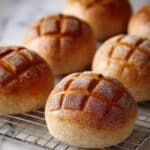
Classic Japanese Melon Pan Recipe
- Total Time: 2 hours
- Yield: 8 buns 1x
- Diet: Vegetarian
Description
Classic Japanese Melon Pan is a delightful sweet bun characterized by a soft, fluffy bread base topped with a crisp, cookie-like crust. Despite its name, it does not contain melon flavor traditionally; the name refers to the bun’s appearance resembling a melon. This recipe combines a tender bread dough with a lightly sweet, buttery cookie dough crust, finished with a distinctive crisscross pattern and a sugar coating for an irresistible treat.
Ingredients
For the bread dough:
- 2½ cups bread flour
- 2 tablespoons sugar
- 1 teaspoon salt
- 2 teaspoons instant yeast
- ¾ cup warm milk
- 1 large egg
- 3 tablespoons unsalted butter, softened
For the cookie dough topping:
- 1 cup all-purpose flour
- ⅓ cup granulated sugar
- ¼ cup unsalted butter, softened
- 1 egg yolk
- 1 tablespoon milk
- ½ teaspoon vanilla extract
- ¼ teaspoon baking powder
- Extra granulated sugar for coating
Instructions
- Prepare the bread dough: In a large bowl, combine bread flour, sugar, salt, and instant yeast. In a separate bowl, whisk warm milk with the egg. Add the wet ingredients to the dry and mix until a dough forms. Knead for about 10 minutes until smooth and elastic, then incorporate the softened butter, continuing to knead until the dough is glossy and stretchy. Cover and let rise in a warm place for 1 hour or until doubled in size.
- Make the cookie dough topping: Cream the softened butter and sugar together until fluffy. Add the egg yolk, milk, and vanilla extract, mixing well. Sift in flour and baking powder, then mix to form a soft dough. Divide into 8 balls, flatten into disks, and chill until ready to use.
- Shape the buns: Once the bread dough has risen, punch it down and divide into 8 equal pieces. Roll each into smooth balls. Wrap each bread ball with a cookie dough disk, covering the top and sides but leaving the bottom exposed. Lightly press and roll them in granulated sugar, then score a crisscross pattern on top using a knife.
- Second rise: Place the prepared buns on a parchment-lined baking sheet, cover loosely, and let them rise for an additional 30–40 minutes until puffed.
- Bake: Preheat the oven to 350°F (175°C). Bake the buns for 15–18 minutes or until the cookie topping is lightly golden. Cool on a wire rack before serving warm or at room temperature.
Notes
- Traditional melon pan does not contain melon flavor; the name is derived from the bun’s pattern that resembles a melon.
- For a fun twist, add melon extract or green food coloring to the cookie dough.
- Ensure the bread dough is kneaded well for a soft and elastic texture.
- Do not cover the bottoms of the buns with cookie dough to avoid sogginess.
- Prep Time: 30 minutes
- Cook Time: 18 minutes
- Category: Bread
- Method: Baking
- Cuisine: Japanese
